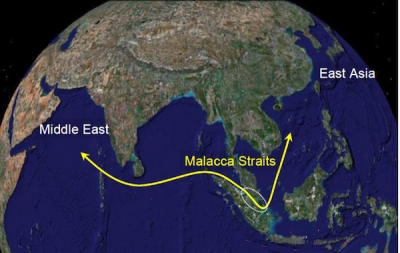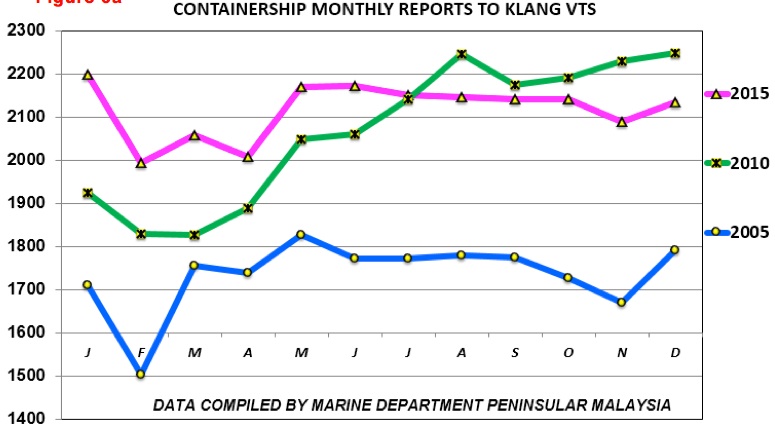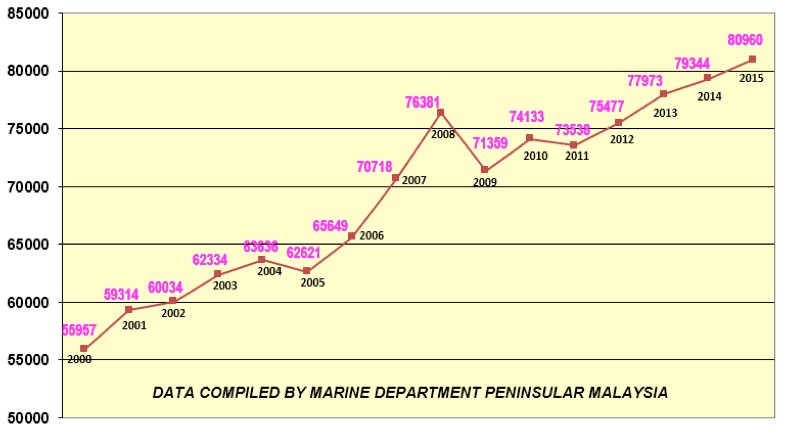Malacca Strait transits grow 2% to record in 2015, boxships see dip in H2

The number of vessels transiting the Malacca Strait grew to 2% in 2015 to hit a new all time high, however, the number of containerships using the key waterway dipped below 2010 levels in the second half of the year.
According to figures compiled by the Nippon Maritime Center (NMC) there were 80,980 transits in 2015 of the key waterway connecting Europe and Asia by vessels of over 300 gt. This represented a 2% increase compared to the 79,344 transits in the previous year.
The annual report by the NMC in Singapore has been compiled since the year 2000 using data from the Marine Department of Malaysia’s STRAITREP reporting system. The statistics are based on vessels entering and leaving from both ends of the Strait - One Fathom Bank to the north and Iyu Kecil to the south.
In 2015 on average 222 vessels over 300 gt transited the Strait per day, compared to 217 per day in the previous year.
By vessel type containerships are the largest users of the strait accounting for 33% of transits. While the number of containership transits continued to grow in 2015 to 25,393 compared to 25,071 in 2014, numbers are still well below the peak of 26,359 transits seen in 2008. Moreover, monthly figures showed that from July 2015 the number of transits for containerships dipped below that seen in the same period in 2010.
“Container traffic reports have been affected by a growing number of Ultra Large Containerships (ULCs) being brought into service, noticeable since July 2015 when the monthly transits dropped below the same period of 2010,” the report commented.

Tankers, including VLCCs, are second largest users of the Strait for transits. Last year VLCC transits grew 6.6% to 5,324, outstripping an average growth of 4% a year since 2005. This equates to 15 tankers a day on average transiting the narrow deepwater route.
“Over the last 10 years till 2015, VLCC and bulk carrier traffic through the straits have continued to register growth, even in the face of challenging shipping market conditions,” the report said.
Despite the depressed state of dry bulk shipping markets in 2015 transits of the Strait by bulkers grew 12.7% to 15,169 year-on-year.
On the decline though were LNG/LPG carrier transits falling 5.6% last year 3,936 compared to 4,173 in 2014. Gas carrier transits peaked in 2013 at 4,248.
Nippon Maritime Center commented: “The monthly transit reports see a dramatic reduction since 2013, brought about by falling crude oil prices and increased crude oil liquefaction and processing resulting in a quieter LNG market with lower daily rates and idling LNG ships, amidst an aggressive newbuilding programme.”
Looking ahead there is a possible negative impact on traffic vessels opting to sail round the Cape of Good Hope in South Africa rather than via the Suez Canal due to low fuel prices, despite the route the 3,100 nm longer. “With the low price of marine fuel oil and some owners rerouting their ships via round-the-cape to avoid hefty Suez Canal transit charges, the effect on Malacca Strait traffic is yet unknown,” the report noted.
One of the world's busiest waterways roughly one-third of global shipping traffic tranists the Malacca Strait.

HEADLINES
- Do shipping markets want Biden or Trump for the win?
- All 18 crew safe after fire on Japanese-owned tanker off Singapore
- Singapore launching $44m co-investment initiative for maritime tech start-ups
- Cosco debuts Global Shipping Industry Chain Cooperation Initiative
- US warns of more shipping sanctions
- China continues seaport consolidation as Dalian offer goes unconditional